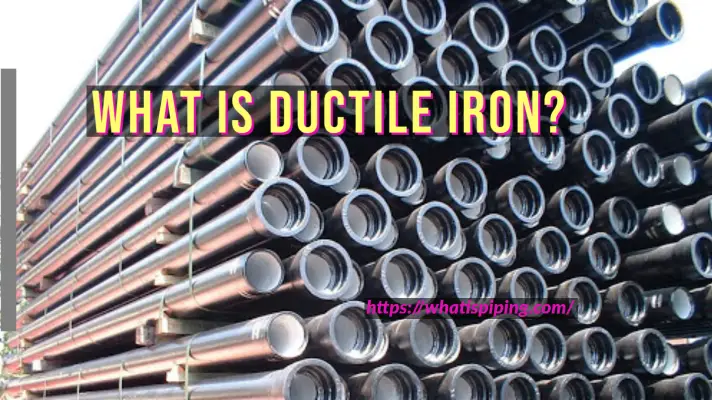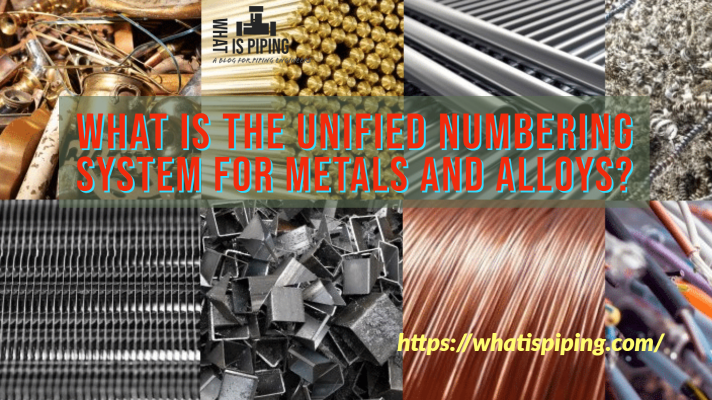Monel is a trademark name for a group of nickel alloys mostly composed of nickel and copper, with traces of iron, manganese, carbon, and silicon. Stronger than pure nickel, Monel alloys are known for their corrosion resistance to several corrosive environments. The material was first developed by Robert Crooks Stanley in 1901. The name “Monel” is a trademark of “Special Metals Corporation”.
Known as Superalloy, the microstructure of Monel exhibits a face-centered cubic lattice structure. Monel alloy 400 is approved by the ASME Boiler and Pressure Vessel Code as a material of construction.
What is Monel used for?
Due to fabrication by hot- and cold-working, machining, and welding, Monel is extensively used in marine and chemical processing fields. However, the material is costly so can only be used where cheaper alternatives are not available. Usually, Monel piping is more than 3 times as expensive as compared to carbon steel pipe. Typical applications of Monel are valves and pumps; pump and propeller shafts; electrical and electronic components; crude petroleum stills, boiler feedwater heaters, marine fixtures, and fasteners; gasoline and water tanks; fuel tanks; springs; chemical processing equipment; process vessels and piping; heat exchangers; metal instruments; deaerating heaters; musical instruments; refrigerators; film processing; kitchen sinks; roofing; and eyeglass frames. Monel is available in a pipe, fittings, plate, strip, round bar, strip, tube, sheet, and wire form.
Properties of Monel Alloy
Monel is a single-phase, solid-solution binary alloy with excellent mechanical properties at subzero temperatures. With a specific gravity of 8.80, the Monel alloy 400 has a melting temperature range of 1300–1350 °C and a Poisson ratio of 0.32. The following table provides the mechanical properties of Monel Alloy 400 material at room temperature.
| Form | Condition | Tensile Strength (ksi) | Yield Strength (ksi) | % Elongation | Brinell hardness | Rockwell B Hardness | Tensile Strength (Mpa) | Yield Strength (Mpa) |
| Rod and Bar | Annealed | 75-90 | 25-50 | 60-35 | 110-149 | 60-80 | 517-620 | 172-345 |
| Rod and Bar | Hot-Finished (except Hexagons over 2 1/8 inches and Angles) | 80-110 | 40-100 | 60-30 | 140-241 | 75-100 | 552-758 | 276-690 |
| Rod and Bar | Hot-Finished Hexagons over 2 1/8 inches and Angles | 75-100 | 30-55 | 50-30 | 130-184 | 72-90 | 517-690 | 207-379 |
| Rod and Bar | Cold-Drawn, Stress-Relieved | 84-120 | 55-100 | 40-22 | 160-225 | 85-20C | 579-827 | 379-690 |
| Plate | Hot Rolled | 75-95 | 40-75 | 45-30 | 125-215 | 70-96 | 517-655 | 276-517 |
| Plate | Hot Rolled, Annealed | 70-85 | 28-50 | 50-35 | 110-140 | 60-76 | 482-586 | 193-345 |
| Sheet | Annealed | 70-85 | 30-45 | 45-35 | 65-80 | 482-586 | 207-310 | |
| Sheet | Cold Rolled, hard | 100-120 | 90-110 | 15-02 | Min. 93 | 690-827 | 621-758 | |
| Cold Rolled Strip | Annealed | 70-85 | 25-45 | 55-35 | Max. 68 | 482-586 | 172-310 | |
| Cold Rolled Strip | Spring Temper | 100-140 | 90-130 | 15-02 | Min. 98 | 690-965 | 621-896 | |
| Seamless pipe and tube | Cold Drawn, Annealed | 70-85 | 25-45 | 50-35 | Max 75 | 482-586 | 172-310 | |
| Seamless pipe and tube | Cold Drawn, Stress Relieved | 100-140 | 55-100 | 35-15 | 85-100 | 586-827 | 379-690 | |
| Cold Drawn Wire | Annealed | 70-95 | 30-55 | 45-25 | 482-655 | 207-379 |
Machinability: As during machining Monel work-hardens, the machinability is very difficult. Techniques used on iron can be used for machining Monel material.
Welding: Gas-arc welding, gas-metal-arc welding, metal-arc welding, and submerged-arc welding are the preferred welding methodology for Monel.
Forging: Monel can be forged but that needs to be performed under controlled procedures.
Hot-working: Typical hot working temperature range for Monel alloy is 648-1176°C (1200-2150°F). Prior to starting hot working, the proper temperature must be decided.
Grades of Monel
Commercially there are five types of Monel that are traded under ISO standards 6208 (plate, sheet, and strip), ISO 9725 (forgings), ISO 9723 (bars), ISO 9724 (wire), and the DIN 17751 (pipes and tubes). Those Monel grades are:
- Monel 400 or alloy 400
- Monel 401
- Monel 404
- Monel 405, and
- Monel K-500
The following table provides the chemical compositions of all such Monel grades.
| Monel Grade/Trade Name | ASTM/AISI Alloy Type | UNS No. | %Ni | %Cu | %Fe | %Mn | %Al | %Ti | %Si |
| Monel 400 | B 127/ B 164 | N04400 | Min. 63 | 28-34 | Max 2.5 | Max 2.0 | Max 0.5 | ||
| Monel 401 | N04401 | Min. 63 | 28-34 | Max 2.5 | Max 2.0 | Max 0.5 | |||
| Monel 404 | N04404 | 52-57 | Remaining | Max 0.5 | Max 0.1 | Max 0.05 | Max 0.1 | ||
| Monel 405 | B 164 | N04405 | Min. 63 | 28-34 | Max 2.5 | Max 2.0 | Max 0.5 | ||
| Monel K500 | B 865 | N05500 | Min. 63 | 27-33 | Max 2.0 | Max 1.5 | 2.3-3.15 | 0.35-0.85 | Max 0.5 |
Monel 400: Monel 400 is covered by the following standards: BS 3075, 3076 NA 13, DTD 204B, and ASTM B164. It is also known as alloy 400 and shows high strength, excellent corrosion resistance, good ductility, and thermal conductivity. Typical applications of Monel 400 include heat exchangers, valves, marine engineering, chemical, and hydrocarbon processing.
Monel 401: Monel 401 is widely used in specialized electric and electronic applications. The alloy has good weldability by the gas-tungsten-arc process and good brazing characteristics. Resistance welding is a very satisfactory method for joining the material. Monel 401 is covered by standard UNS N04401.
Monel 404: The composition of Monel 404 is carefully adjusted to provide a very low Curie temperature, low permeability, and good brazing characteristics. Common welding and forging techniques can be used for Monel 404 but it can not be hot worked. For a better finish, cold working can be performed. Widely used in capsules for transistors and ceramic to metal seals, Monel 404 is covered by standards UNS N04404 and ASTM F96
Monel 405: Mainly used for automatic screw machine stock, Monel 405 is designated as UNS N04405 and is covered by ASME SB-164, ASTM B-164, Federal QQ-N-281, SAE AMS 4674 & 7234, Military MIL-N-894, BS3072NA18, BS3073NA18, QQ-N-286, DIN 17750, ISO 6208, BS3075NA18, BS3076NA18, ASTM B 865, DIN 17752, DIN 17753, DIN 17754, QQ-N-286, SAE AMS 4676, ASME Code Case 1192, ISO 9723, ISO 9724, ISO 9725, BS3074NA18, DIN 17751 & NACE MR-01-75. It is a free-machining grade of alloy 400. The amount of sulfur is increased to 0.025-0.060% which creates nickel-copper sulfides increasing the machinability.
Monel K-500: The addition of aluminum and titanium to the nickel-copper base creates Monel K500 possessing greater strength and hardness along with excellent corrosion resistance properties. However, alloy K-500 has a greater tendency toward stress-corrosion cracking in some environments in age-hardened conditions. Monel K500 is particularly suitable for shafts of centrifugal pumps in marine service. Typical applications for alloy K-500 are instruments, oil-well tools, electronic components, marine propellers, pump shafts, rotary impellers, doctor blades, scrapers, and oil-well drill collars.
Advantages of Monel
The main advantages that Monel offers are
- high corrosion resistance to acids and alkalis.
- resistance to alkalis.
- good ductility (easy to shape and form)
- ease of welding, brazing, and soldering
- high mechanical strength
- availability in different forms like sheets, plates, rods, bars, pipes, and tubes
- attractive appearance and finishes.
- ability to hold up in high-temperature situations as well as low temperatures
Disadvantages of Monel
Even though Monel provides a lot of advantages, it is not a perfect metal. It has disadvantages like:
- Poor Machinability
- Exposure to pitting corrosion in a saltwater environment.
- Sometimes, galvanic corrosion can be created in presence of Monel








